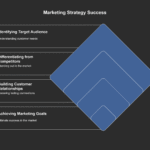In the contemporary business environment, operational excellence has evolved from a manufacturing-centric concept to a comprehensive organizational capability that drives competitive advantage across all industry sectors. Modern operational excellence services encompass sophisticated methodologies that integrate lean principles, digital technologies, and advanced analytics to create sustainable performance improvements that extend far beyond traditional cost reduction initiatives.
The pursuit of operational excellence requires a systematic approach that addresses the fundamental drivers of organizational performance while building capabilities for continuous improvement. This technical examination explores the methodological frameworks, implementation strategies, and technological enablers that define world-class operational excellence services in today’s complex business landscape.
Theoretical Foundation of Operational Excellence
Systems Thinking and Process Architecture
Operational excellence services are grounded in systems thinking principles that recognize organizations as complex adaptive systems where individual processes interact to create emergent performance characteristics. This perspective requires consultants to understand not just individual process inefficiencies, but the systemic relationships that drive overall organizational performance.
Process architecture mapping provides the foundational framework for operational excellence initiatives. Advanced mapping techniques utilize value stream analysis, cross-functional flow diagrams, and process dependency matrices to create comprehensive visual representations of organizational workflows. These artifacts enable systematic identification of bottlenecks, redundancies, and optimization opportunities that may not be apparent through traditional functional analysis.
The integration of process mining technologies has revolutionized process architecture development by enabling the automated discovery of actual process flows from transactional data. These tools can identify process variations, compliance deviations, and performance patterns that would be impossible to detect through manual observation or stakeholder interviews.
Performance Measurement and Statistical Process Control
Effective operational excellence requires sophisticated measurement systems that can distinguish between random variation and systematic performance changes. Statistical process control (SPC) techniques provide the mathematical foundation for understanding process capability and identifying opportunities for improvement.
Control chart methodologies enable organizations to monitor process performance in real-time and identify when interventions are necessary. Advanced SPC applications utilize multivariate control charts, CUSUM procedures, and EWMA techniques to detect subtle performance shifts before they impact customer satisfaction or financial results.
Six Sigma methodologies provide structured frameworks for process improvement that combine statistical analysis with systematic problem-solving approaches. DMAIC (Define, Measure, Analyze, Improve, Control) and DMADV (Define, Measure, Analyze, Design, Verify) frameworks ensure that improvement initiatives are data-driven and sustainable.
Core Methodological Frameworks
Lean Manufacturing and Service Applications
Lean principles form the cornerstone of operational excellence services, providing systematic approaches to waste elimination and flow optimization. The seven wastes of lean (transportation, inventory, motion, waiting, overproduction, over-processing, and defects) provide structured frameworks for identifying improvement opportunities across diverse organizational contexts.
Value stream mapping techniques enable organizations to visualize current state processes and design future state configurations that eliminate non-value-added activities. Advanced value stream mapping incorporates information flow analysis, quality metrics, and capacity utilization data to create comprehensive process optimization roadmaps.
Lean service applications extend these principles beyond manufacturing environments to address service delivery processes, administrative functions, and knowledge work activities. Service value streams require specialized analysis techniques that account for the intangible nature of service outputs and the variability inherent in human-delivered processes.
Theory of Constraints and Throughput Optimization
The Theory of Constraints (TOC) provides a systematic methodology for identifying and managing system bottlenecks that limit overall organizational performance. TOC applications in operational excellence services focus on throughput optimization rather than local efficiency improvements that may actually reduce system performance.
Constraint identification requires sophisticated analysis techniques that can distinguish between physical constraints, policy constraints, and paradigm constraints. Each constraint type requires different management approaches and intervention strategies.
Drum-Buffer-Rope scheduling methodologies provide frameworks for synchronizing organizational activities around system constraints. These approaches ensure that constraint resources operate at maximum efficiency while preventing upstream overproduction that creates inventory buildup and system instability.
Business Process Reengineering and Transformation
While continuous improvement approaches focus on incremental enhancement of existing processes, business process reengineering (BPR) provides frameworks for fundamental process redesign. Modern BPR applications integrate digital technology capabilities with process design to create transformational performance improvements.
Process reengineering projects require careful change management to address the organizational disruption that accompanies fundamental process changes. Success factors include strong executive sponsorship, comprehensive stakeholder engagement, and systematic capability building to support new process requirements.
The integration of robotic process automation (RPA) and artificial intelligence technologies enables process reengineering initiatives that were previously impractical due to technological limitations. These technologies can automate complex decision-making processes and handle unstructured data inputs that traditional automation approaches could not address.
Advanced Analytics and Digital Enablers
Predictive Analytics for Operational Performance
The application of predictive analytics to operational excellence represents a significant evolution from reactive problem-solving to proactive performance optimization. Machine learning algorithms can identify patterns in operational data that predict quality problems, equipment failures, or capacity constraints before they impact organizational performance.
Predictive maintenance applications utilize sensor data, historical maintenance records, and operational parameters to optimize maintenance schedules and prevent unplanned downtime. These approaches can reduce maintenance costs by 20-30% while improving equipment reliability and extending asset life cycles.
Demand forecasting models enable organizations to optimize capacity planning, inventory management, and resource allocation decisions. Advanced forecasting techniques incorporate external market data, seasonal patterns, and promotional effects to provide more accurate predictions than traditional time series approaches.
Digital Twin Technologies
Digital twin technologies create virtual representations of physical processes that enable sophisticated simulation and optimization capabilities. These digital models can test process changes, evaluate capacity scenarios, and optimize resource allocation without disrupting actual operations.
Digital twins integrate real-time data streams with simulation models to provide continuous optimization recommendations. These systems can automatically adjust process parameters to maintain optimal performance as operating conditions change.
The development of digital twins requires sophisticated data integration capabilities that can combine data from enterprise resource planning systems, manufacturing execution systems, and Internet of Things sensors. Data quality and integration challenges represent significant implementation barriers that must be addressed through comprehensive data governance frameworks.
Internet of Things and Real-Time Monitoring
IoT technologies enable unprecedented visibility into operational processes through real-time data collection from sensors, devices, and equipment. This data provides the foundation for advanced analytics applications and enables immediate response to performance deviations.
Edge computing capabilities enable real-time data processing and decision-making at the point of operation rather than requiring data transmission to centralized systems. These capabilities reduce latency and enable more responsive operational control systems.
The integration of IoT data with enterprise systems requires sophisticated data architecture and cybersecurity frameworks. Organizations must balance the benefits of increased connectivity with the risks associated with expanded attack surfaces and data privacy concerns.
Implementation Methodologies and Change Management
Transformation Program Management
Operational excellence initiatives typically involve multiple interconnected projects that must be coordinated to achieve systematic performance improvements. Program management frameworks provide structured approaches to managing these complex transformation efforts.
Portfolio optimization techniques enable organizations to prioritize improvement initiatives based on expected return on investment, implementation complexity, and strategic alignment. These approaches ensure that limited resources are allocated to initiatives with the highest value creation potential.
Benefits realization management provides frameworks for tracking and capturing the value created through operational excellence initiatives. These approaches include baseline establishment, progress monitoring, and benefit verification processes that ensure promised improvements are actually achieved.
Organizational Change and Capability Building
Sustainable operational excellence requires fundamental changes in organizational culture, capabilities, and behaviors. Change management frameworks provide structured approaches to managing the human dimensions of operational transformation.
Capability maturity models enable organizations to assess their current operational excellence capabilities and develop roadmaps for systematic improvement. These models identify the competencies, processes, and tools required to achieve world-class operational performance.
Training and development programs must be designed to build the analytical, problem-solving, and improvement facilitation skills required to sustain operational excellence. These programs typically combine classroom instruction with hands-on project experience to ensure practical skill development.
Governance and Sustainability Frameworks
Operational excellence initiatives require robust governance frameworks to ensure that improvements are sustained over time. Governance structures must balance standardization with flexibility to accommodate local process variations and changing business requirements.
Continuous improvement programs provide systematic approaches to ongoing performance enhancement. These programs typically include suggestion systems, improvement project pipelines, and recognition mechanisms that engage employees in ongoing optimization efforts.
Performance review cycles must be aligned with operational excellence objectives to ensure that managers are incentivized to maintain and improve operational performance. This includes balanced scorecard approaches that track both efficiency and effectiveness metrics.
Sector-Specific Applications
Manufacturing Operations
Manufacturing environments provide the original context for operational excellence methodologies and continue to offer significant opportunities for performance improvement. Modern manufacturing operations require integration of traditional lean techniques with advanced digital technologies.
Smart manufacturing concepts utilize IoT sensors, advanced analytics, and automation technologies to create highly responsive and efficient production systems. These approaches enable mass customization capabilities while maintaining the efficiency benefits of standardized production.
Supply chain integration extends operational excellence beyond individual manufacturing facilities to encompass supplier networks and distribution channels. This requires collaborative improvement approaches that align optimization efforts across organizational boundaries.
Service Operations
Service operations present unique challenges for operational excellence due to the intangible nature of service outputs and the direct customer interaction inherent in service delivery. Service excellence frameworks must balance efficiency improvements with customer experience considerations.
Customer journey mapping provides frameworks for understanding service delivery from the customer perspective and identifying opportunities to improve both efficiency and effectiveness. These approaches often reveal disconnects between internal process optimization and customer value creation.
Service standardization initiatives must carefully balance consistency with personalization requirements. Successful service operational excellence programs typically create standardized core processes while maintaining flexibility in customer-facing interactions.
Knowledge Work Optimization
Knowledge work environments require specialized approaches to operational excellence that account for the creative and cognitive nature of knowledge activities. Traditional efficiency metrics may not be appropriate for evaluating knowledge worker performance.
Information flow optimization focuses on ensuring that knowledge workers have timely access to the information and resources they need to make effective decisions. This includes document management systems, collaboration platforms, and decision support tools.
Meeting optimization represents a significant opportunity for knowledge work improvement, as excessive or ineffective meetings consume substantial organizational resources. Structured approaches to meeting management can dramatically improve knowledge worker productivity.
Technology Integration and Digital Transformation
Enterprise Resource Planning and Process Integration
Modern operational excellence initiatives require sophisticated system integration capabilities that enable seamless data flow across organizational processes. Enterprise resource planning (ERP) systems provide the foundational data infrastructure for many improvement initiatives.
API-based integration approaches enable organizations to connect best-of-breed applications rather than relying on monolithic system architectures. These approaches provide greater flexibility in system selection while maintaining data consistency across the organization.
Master data management ensures that critical business data maintains consistency and accuracy across multiple systems and processes. Poor data quality can undermine operational excellence initiatives by providing inaccurate information for decision-making.
Robotic Process Automation and Intelligent Automation
RPA technologies enable the automation of routine, rule-based processes that consume significant human resources. These technologies can provide rapid return on investment while freeing human workers to focus on higher-value activities.
Intelligent automation combines RPA with artificial intelligence capabilities to handle more complex processes that require decision-making or unstructured data processing. These approaches can automate processes that were previously considered too complex for traditional automation approaches.
The implementation of automation technologies requires careful attention to change management and workforce transition planning. Organizations must balance efficiency gains with employee concerns about job displacement and skills obsolescence.
Cloud Computing and Scalable Infrastructure
Cloud computing platforms provide scalable infrastructure that can support sophisticated analytics and optimization applications without requiring significant capital investment. These platforms enable smaller organizations to access advanced operational excellence technologies.
Software-as-a-Service (SaaS) applications provide rapid deployment capabilities for specialized operational excellence tools. These solutions can be implemented more quickly than traditional on-premise systems while providing automatic updates and maintenance.
Data security and compliance considerations require careful evaluation when migrating operational excellence applications to cloud platforms. Organizations must ensure that sensitive operational data is protected while maintaining the flexibility benefits of cloud computing.
Performance Measurement and Continuous Improvement
Key Performance Indicator Development
Effective operational excellence requires comprehensive measurement systems that track both efficiency and effectiveness metrics. KPI development must balance simplicity with comprehensiveness to provide actionable insights without creating measurement overhead.
Leading and lagging indicator frameworks ensure that measurement systems provide both historical performance assessment and predictive insights about future performance trends. Leading indicators enable proactive management intervention before performance problems become severe.
Benchmarking approaches provide external reference points for evaluating operational performance and identifying improvement opportunities. Industry benchmarks, best practice studies, and competitive analysis provide context for internal performance assessment.
Statistical Analysis and Performance Trending
Statistical analysis techniques enable organizations to distinguish between random performance variation and systematic changes that require management attention. Control charts, regression analysis, and hypothesis testing provide mathematical rigor to performance evaluation.
Performance trending analysis identifies long-term patterns in operational metrics that may not be apparent in short-term performance reviews. These analyses can reveal gradual performance degradation or improvement that requires strategic attention.
Root cause analysis techniques provide systematic approaches to identifying the fundamental drivers of performance problems. These methodologies include fishbone diagrams, five-why analysis, and fault tree analysis that ensure corrective actions address underlying causes rather than symptoms.
Risk Management and Compliance Integration
Operational Risk Assessment
Operational excellence initiatives must carefully consider the risk implications of process changes and optimization efforts. Risk assessment frameworks provide structured approaches to evaluating the potential negative consequences of improvement initiatives.
Business continuity planning ensures that operational excellence improvements do not create single points of failure or increase organizational vulnerability to disruption. These considerations are particularly important for critical business processes.
Compliance risk management addresses the regulatory implications of process changes and ensures that operational improvements do not compromise compliance with applicable laws and regulations. This requires close coordination between operational excellence teams and compliance functions.
Quality Management System Integration
Quality management systems provide established frameworks for process control and continuous improvement that complement operational excellence initiatives. ISO 9001 and other quality standards provide structured approaches to process management.
Total Quality Management (TQM) principles emphasize customer focus, employee involvement, and continuous improvement that align closely with operational excellence objectives. These approaches provide cultural frameworks that support sustained performance improvement.
Quality auditing and assessment processes provide independent evaluation of process effectiveness and compliance with established standards. These activities help ensure that operational improvements are sustained over time.
Future Directions and Emerging Trends
Artificial Intelligence and Machine Learning Applications
AI and ML technologies are creating new possibilities for operational optimization that were previously impractical due to computational limitations. These technologies can identify complex patterns in operational data and provide optimization recommendations that exceed human analytical capabilities.
Natural language processing enables the analysis of unstructured data sources including maintenance logs, customer feedback, and employee suggestions. These capabilities provide new insights into operational performance that were previously inaccessible.
Computer vision applications enable automated quality inspection and process monitoring that can detect defects or deviations with greater accuracy and consistency than human observation. These technologies are particularly valuable in manufacturing and logistics environments.
Sustainability and Circular Economy Integration
Environmental sustainability considerations are becoming increasingly important in operational excellence initiatives. Organizations must balance efficiency improvements with environmental impact reduction and resource conservation objectives.
Circular economy principles provide frameworks for designing processes that minimize waste and maximize resource utilization. These approaches often require fundamental rethinking of traditional linear production models.
Life cycle assessment methodologies enable comprehensive evaluation of the environmental impacts of operational processes. These analyses can identify opportunities to improve both operational efficiency and environmental performance simultaneously.
Ecosystem and Network Optimization
Modern operational excellence increasingly requires optimization across organizational boundaries to address supply chain interdependencies and ecosystem relationships. These approaches require collaborative improvement methodologies that align incentives across multiple organizations.
Platform business models create new requirements for operational excellence that focus on enabling third-party value creation rather than optimizing internal processes. These models require different metrics and optimization approaches than traditional linear business models.
Network effect optimization focuses on creating operational capabilities that become more valuable as they are more widely adopted. These approaches require long-term investment strategies that may not provide immediate returns but create sustainable competitive advantages.
Conclusion
Operational excellence services have evolved into sophisticated management disciplines that integrate advanced analytics, digital technologies, and systematic improvement methodologies to create sustainable competitive advantages. The success of these initiatives depends on their ability to balance technical rigor with practical implementation considerations while addressing the human and cultural dimensions of organizational change.
The convergence of digital technologies, advanced analytics, and proven improvement methodologies is creating unprecedented opportunities for operational transformation. Organizations that develop comprehensive operational excellence capabilities will be better positioned to navigate increasing competitive pressure and market volatility while creating sustainable value for all stakeholders.
As operational excellence continues to evolve, the integration of sustainability considerations, ecosystem optimization, and artificial intelligence capabilities will create new paradigms for organizational performance. The organizations that successfully adapt their operational excellence approaches to these emerging requirements will define the competitive landscape of the future business environment.
Partner: ISO 27001 and SOC 2 Consultants







Leave a Reply
You must be logged in to post a comment.